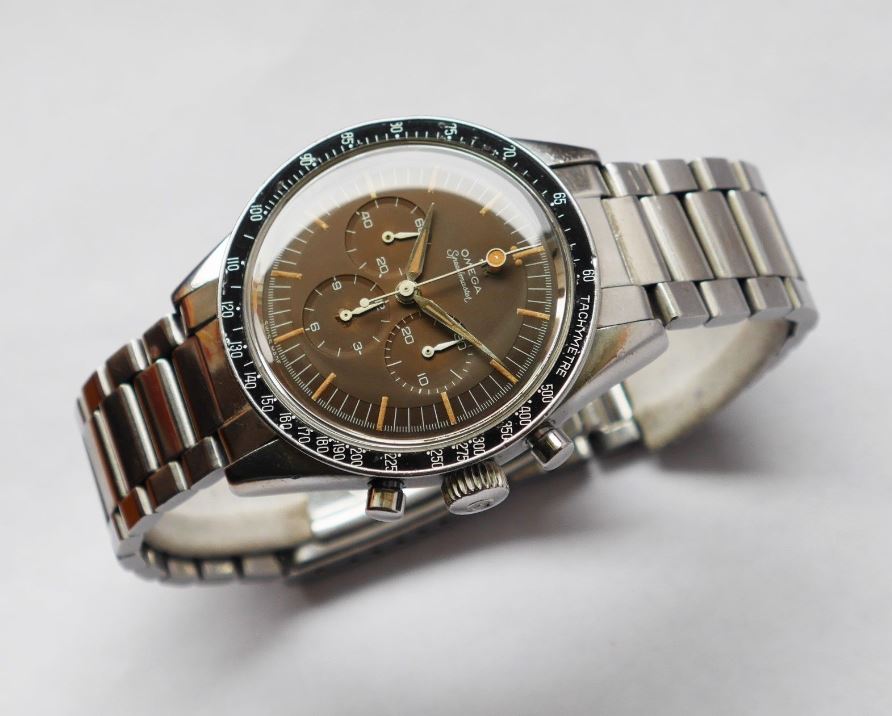Omega is easily one of the most popular luxury brands for young professionals in the entire world. Even though the company is owned by the Swatch Group, Omega retains its own identity. In 1969, an Omega Speedmaster became the first watch worn on the surface of the moon, and in 1995, Omega became the official sponsor for the successful James Bond film franchise, raising the company’s profile exponentially. From the bottom of the ocean to the surface of the moon, Omega watches are built to thrive in the most extreme environments imaginable.
In addition to the brand's numerous partnerships, sponsorships, and brand ambassador deals, Omega is also an industry leader when it comes to new technologies and cutting-edge materials. Due to the extensive degree of innovation that surrounds their timepieces, Omega has created an extensive list of terms for their various proprietary materials and technologies. Here is a list of all the various Omega watch terms you are likely to encounter while browsing the brand's catalog.
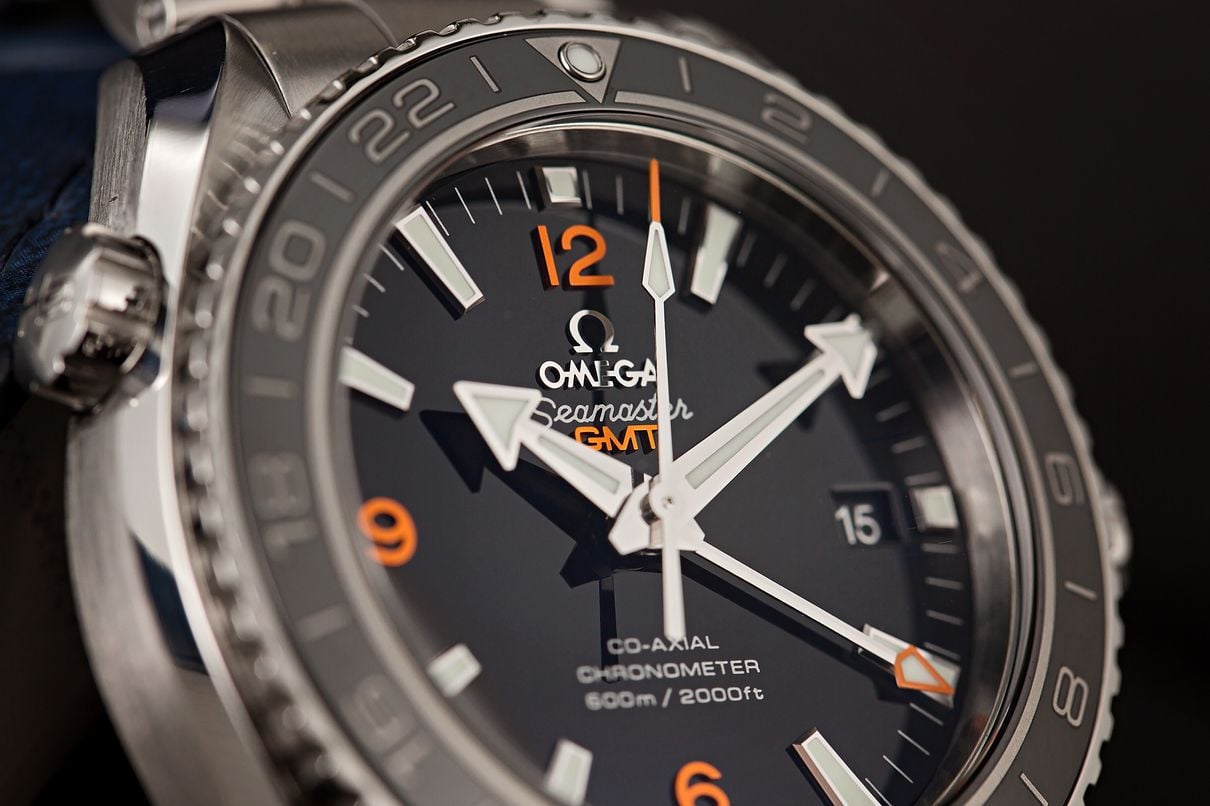
Omega watches with 24-hour sub-dials are not controlled by any chronograph pushers. Instead, the 24-hour display correlates to the main timekeeping hands. Midnight is called 24:00 indicating the end of the day. 00:00 is used to identify the start of a new day. The feature enables the time to be referenced by the wearer in 24-hour format (i.e. 14:00 as opposed to 2pm).
The hand points to the hours in a 24-hour ring around the dial as opposed to the standard 12-hour time scale. Typically, this 24-hour ring is located on the innermost proportion of the dial when not on the bezel. Omega watches with a GMT 24-hour inner scale are presented in models like the De Ville Co-Axial GMT model, while models like the Seamaster Planet Ocean GMT have their 24-hour scales on their rotating bezels.
An example of an Omega watch equipped with an alarm function is the Memomaster model. Alarm functions can also be incorporated into multifunctional watches, accompanied by other features like countdown timers and chronographs.
The Omega Constellation Globemaster Annual Calendar is a good example of a watch with an annual calendar complication. The central hand within this 41mm case points to the current month with an instantaneous jump feature, while the numerical date only needs to be adjusted manually once a year. The movements powering these elegant timepieces boast a certificate of superior quality and reliability.
Omega watches that are particularly renowned for housing antimagnetic movements are those from the Seamaster collection. Omega’s revolutionary Co-Axial caliber 8508 can resist magnetic fields that exceed 15,000 gauss, significantly surpassing previous antimagnetic watch movements.
With an Apnea timing function, a system of 7 circles completely changes color with the passing of each minute, rather than displaying elapsed time on separate registers like traditional chronograph watches.
Bidirectional rotating bezels can be used to measure elapsed time; however they are most frequently found on GMT watches and are used for displaying second or third time zones. Models like the Omega Seamaster Planet Ocean 600M Co-Axial GMT feature bi-directional rotating bezels with 24-hour markings etched onto their surface, and are used in conjunction with the 24-hour hand to reference additional time zones.
By seamlessly blending the two materials, Omega experts were able to produce a ceramic bezel with 18k gold numerals for the very first time. The combination of 18k gold and ceramic produces a surface that is remarkably smooth to the touch.
The Omega Speedmaster Moonwatch is one of the most iconic and recognizable chronographs in the entire world. It is characterized by a traditional 3-6-9 sub-counter layout with luminescent stick indexes and hands, along with a black tachymeter scale bezel. Chronograph watches can be self-winding, quartz-powered, or manual-winding.
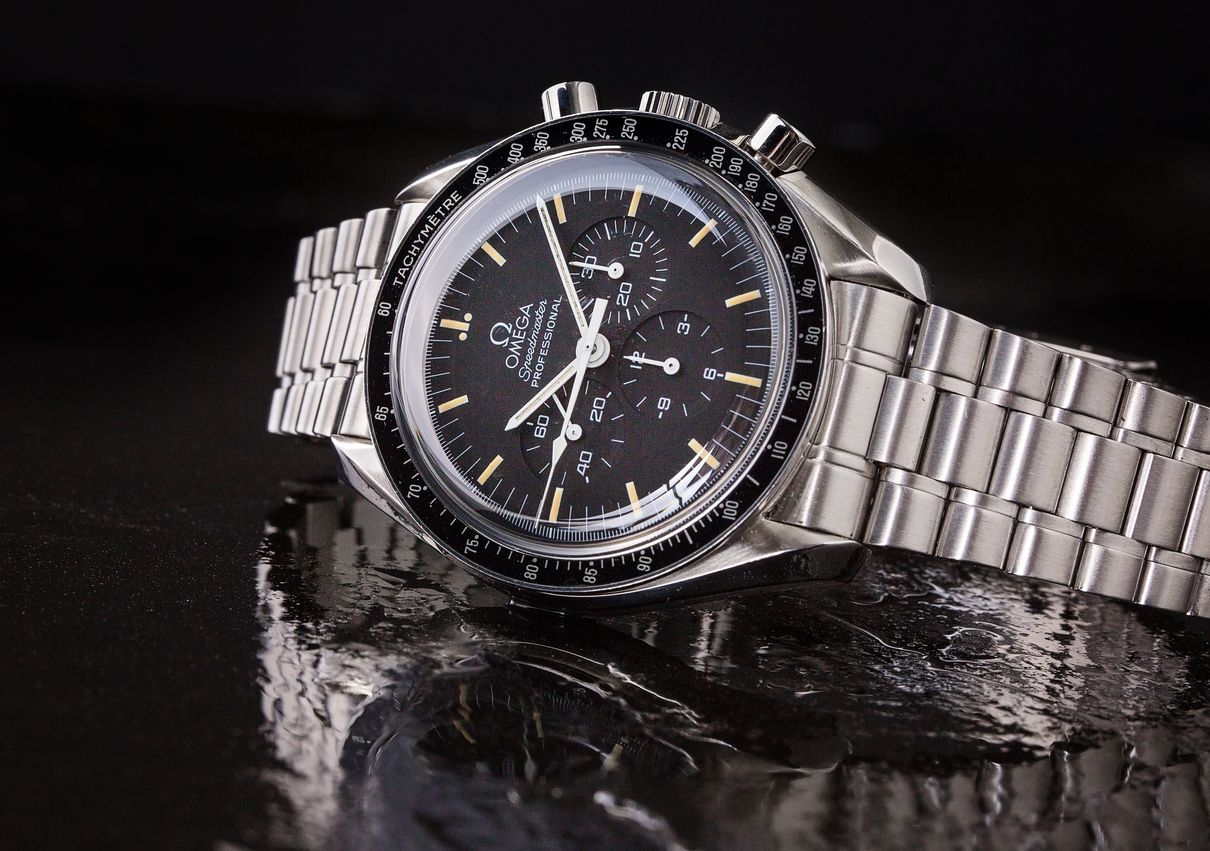
Omega chronometer watches have been subject to 15 days of stringent tests to obtain an official rate certificate from the COSC- the official Swiss Chronometer Rating Institute. Any Omega watch referred to as a chronometer is highly accurate.
Omega De Ville watches are renowned for their classic and elegant-looking dials with slender central hands and a practical date feature displayed at 3 o’clock. Other common locations to find a date feature on the dial of a watch include the 6 o’clock and 4:30 positions.
The Omega Aqua Terra 150M Co‑Axial Day‑Date is one example of a watch with a day-date feature. The numerical date of the month is displayed through a window at 6 o'clock, while the day of the week appears through an arch-shaped window at 12 o'clock.
There are diamond Omega watches in collections such as the Constellation and De Ville, which can feature diamonds for the hour markers on the dial or bezels with diamonds embedded into their outer surfaces.
E.O.L. indicators on Omega watches are found on models that are powered by quartz movements. These E.O.L. indicators can be presented by a flashing display (on digital watches) or by a second hand that jumps every several seconds (on analog watches).
Watches with helium escape valves like the Omega Seamaster Planet Ocean 600M Co-Axial model combine impressive water-resistant capabilities with a manually-operated helium escape valve at 10 o'clock on the case. The feature is useful for wearing in pressure chambers during long-term underwater work. The release of pressure caused by helium molecules building up inside the case prevents damage to the watch that would otherwise occur during decompression.
On watches with Jumping Hours functionality, the minute hand tells the time as normal by moving around the dial. Each time the minute hand makes a complete rotation around the dial, the jumping hour indicator is instantly triggered, displaying an immediate jump in the hour window. One example of a jumping hour function is the Omega De Ville Prestige ‘Jumping Hour’ automatic watch, which features a distinct tonneau-shaped case.
Omega has released limited edition watches for its Speedmaster, Seamaster, and various Olympic Games collections. Once the designated amount of watches has been produced, each timepiece becomes unavailable at retailers, which can result in them becoming rare and highly desirable among collectors.
Omega watch components crafted from Liquidmetal™ are harder than standard stainless steel, and the proprietary Liquidmetal™ material is able to bond seamlessly with ceramic, to create longer-lasting components that are highly resistant to daily wear.
Moonphase features allow wearers to track lunar phases such as new moon, first quarter, full moon, and last quarter. Many watch designs display the moonphase indicator at 6 o’clock on the dial, and they are popular among collectors both for their functionality and unique aesthetic.
The Omega 120M Multifunction watch displays both an analog display and a digital display at 6 o'clock. It features a day-date, 24-hours GMT, chronograph, alarm, and perpetual calendar feature. Additionally the Omega Speedmaster X-33 is a multifunction watch that offers a number of unique features specifically for astronauts.
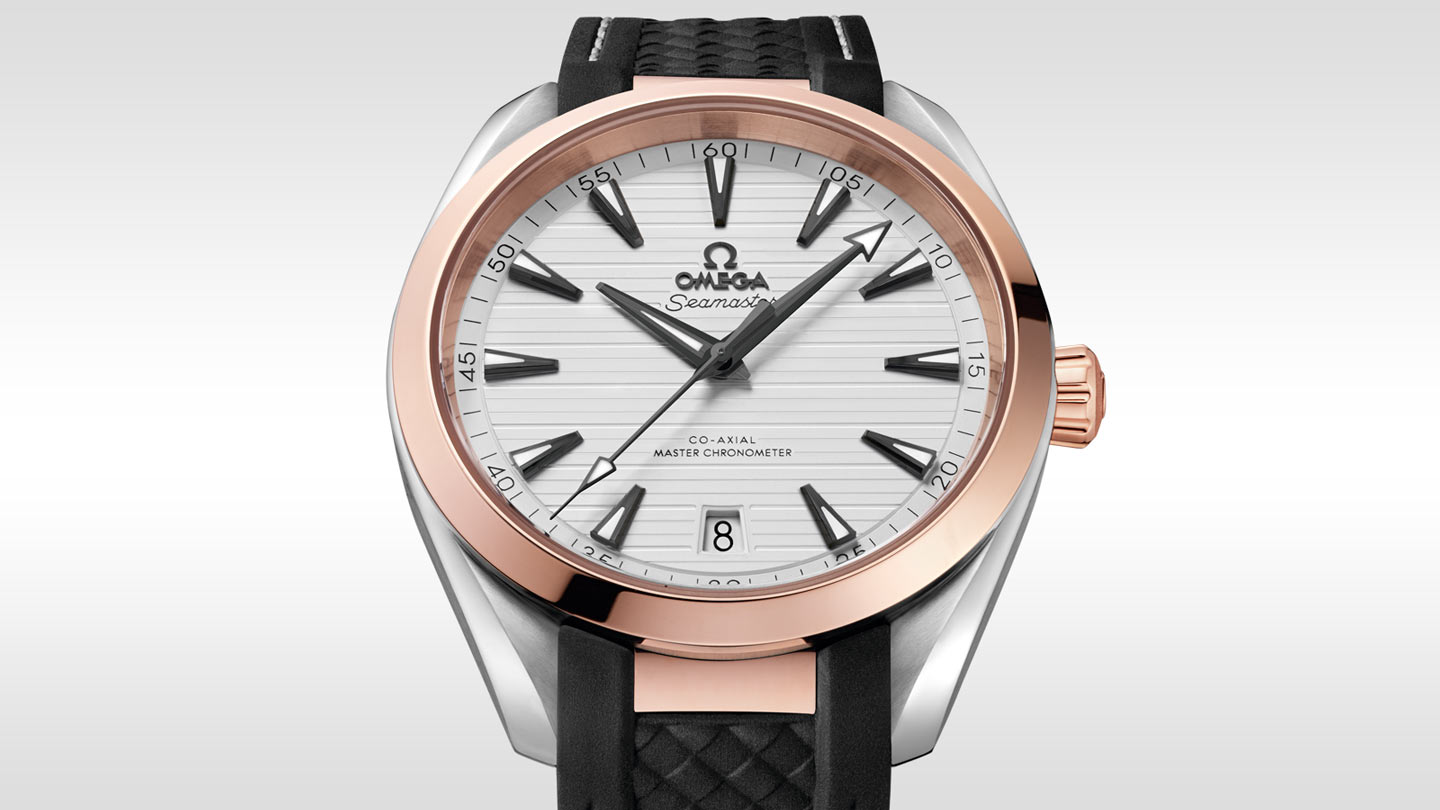
A numbered edition watch can also be a limited edition watch; however not all numbered edition models are limited in quantity. Additionally, limited edition watches do not necessarily have to be numbered, although many are marked with their individual production numbers.
Perpetual Calendar watches like the Omega Constellation Perpetual Calendar automatically account for the different numbers of days in each month, along with tracking leap year cycles. Consequently, perpetual calendar watches never need to have their various calendar features reset, as long as they stay running.
Power Reserve indicators display the amount of tension left in the mainspring, often displaying the value as an approximation of the number of hours or days that the watch will be able to run autonomously. The Omega De Ville Prestige Co-Axial Power Reserve watch presents a classic-looking power reserve indicator at 9 o’clock, combined with a date aperture at 3 o’clock and a small second sub-dial at 9 o’clock.
The Speedmaster CK 2998 Limited Edition watch comes equipped with a pulsometer on a black ceramic bezel with white enamel markings. This scale is used in conjunction with the centrally-mounted chronograph seconds hand to allow the wearer to measure their pulse over the duration of a 60 second period.
The Omega Speedmaster X-33 Regatta Chronograph is a perfect example of a watch that features a regatta timing function. Built specifically for yacht racing, the watch keeps track of the five-minute countdown and race time on a black dial with blue chronograph rings, encased within a lightweight titanium housing.
Many Omega watches, particularly the brand's dive models, feature screw-in crowns. A screw-in crown is advantageous, especially in water-resistant watches used for diving since it helps prevent the winding crown from accidentally getting moved while underwater, which ensures a dry and stable environment for superior performance of the precision movement inside.
Rather than having a centrally-mounted seconds hand like most watches, models with a small seconds feature display their running seconds on a separate sub-dial, typically at 6 o’clock on Omega watches with this feature. Just like standard seconds hands, the hand on a small seconds feature will complete one full rotation each minute.
The split second hand can be stopped by pressing the split-seconds pusher, while the chronograph second hand continues to move. If the same pusher is pressed again the split-second hand catches up with the chronograph second and the two will rotate together once again. A split-second feature can be used to read intermediate time as often as the wearer desires, and is particularly useful for timing multiple events over the same set period of time.
A tachymeter can be used for things calculating average speed based on travel time, or to compute distance based on an average speed by reading kilometers per hour based on 1000 meters distance. Many watches with this feature, such as the Omega Speedmaster display their tachymeter scales on their bezels, while other models can have their tachymeters printed along the periphery of their dials.
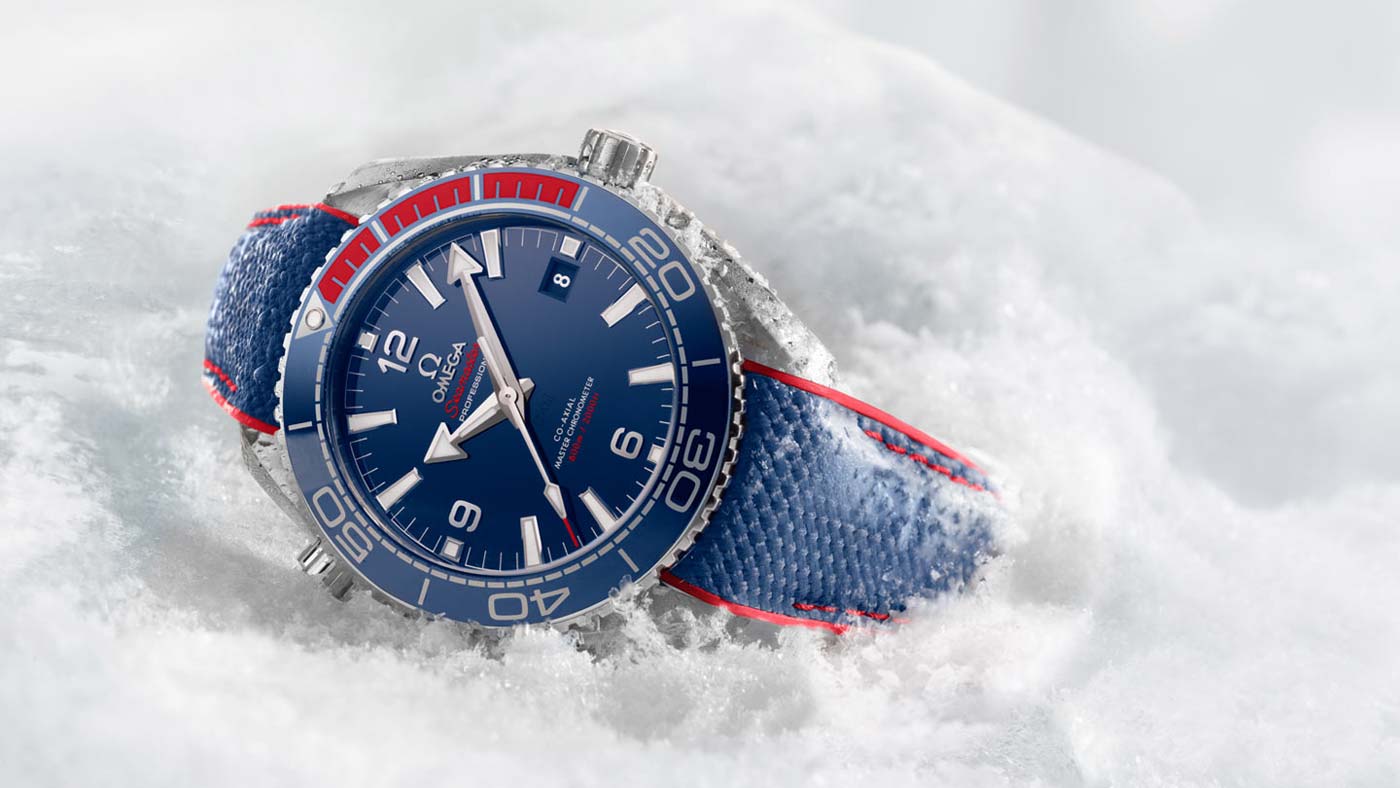
The tourbillon eliminates the problems associated with the effects of gravity on a mechanical watch, by keeping all the components from the escapement (such as the pallets fork, the escape wheel, the pallets wheel, and the balance spring) in constant motion. Since the escapement’s position in relation to the earth is constantly changing, a tourbillon helps rule out any differences in rate that could occur due to the minor effects of gravity on the delicate components of the balance and escapement.
Often made from scratch-resistant sapphire crystal glass which has undergone special anti-reflective treatments, a transparent caseback exposes the intricate arrangement of the movement’s carefully positioned components, without sacrificing durability or water resistance. This allows owners of transparent caseback watches to admire the fine decorations that adorn the numerous internal pieces that collectively keep time.
Unidirectional rotating bezels are most often found on dive watches. This diver-safety tool ensures that accidental rotating of the bezel while underwater will only ever read an over-estimation of immersion time. This helps guarantee diver safety and prevents decompression sickness. Combined with legible, luminous coated markings on the bezel and dial, measuring elapsed time with a unidirectional rotating bezel is made easy, safe, and reliable.
Omega purchased the rights to the Co-Axial Escapement mechanism, which was originally created in 1974 by legendary watchmaker, George Daniels. Since 1999, the company has been equipping its wristwatches with this technology. An evolution of the traditional Swiss lever escapement, the Co-Axial Escapement transmits energy using lateral impulses, which helps makes it less reliant on lubricants than its counterparts.
To achieve METAS certification, a 10-day process must take place, which subjects an Omega watch to a line of stringent tests including exposure to magnetic forces of up to 15,000 gauss. It is one of many highly important values that an Omega Master Chronometer watch can promise, as all Master Chronometer watches must pass standards that are even more stringent than those presented by the COSC.
The Omega Speedmaster chronograph was not only the first to land on the moon but went on to become certified by NASA for spaceflight and extravehicular activity. It has since become the most popular model ever created by Omega, and bears a distinct design featuring a black chronograph dial and matching black tachymeter scale, complete with a robust stainless steel case.
The alloy was developed by Omega experts to combat the damaging effects of magnetism. It is combined with silicone parts inside the movement, along with other non-ferromagnetic materials in the brand's revolutionary Co-Axial escapement movement. Antimagnetic Omega movements that feature Nivagauss components are capable of withstanding magnetic fields of up to 15,000 gauss.
Omega created the alloy from a mix of palladium, gold, and copper, resulting in a unique reddish color that better retains its color than that of traditional 18k rose gold, despite receiving exposure to the elements. The term “Sedna Gold” was adopted from the orbiting planetoid that is described as one of the reddest in the entire solar system.
The design feature made its debut in 1982 when the brand released its line of Constellation Manhattan watches. The word “Griffes” means “Claws” in French, and this unique aesthetic trait has become one of the defining characteristics of the Omega Constellation collection and can be found on both men’s and women’s models.
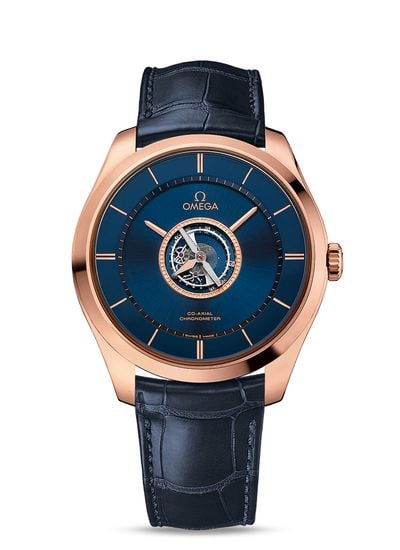
The model was developed with a tungsten-chrome finish along with a striking blue, red, and black dial. Chuck Maddox referred to it as the model that ““…hasn’t turned to the dark side yet.” – thus its “Anakin Skywalker” nickname. This ultra-rare Omega Seamaster watch is powered by the 861 hand-winding chronograph movement, which sits inside an octagonal-shaped case with an internal tachymeter bezel.
Designed in a bold and powerful 47mm case size, the Omega “Big Blue” (as its namesake suggests) presents the time on a blue dial accompanied by a matching blue bezel. The original Seamaster Automatic 120M Chronograph incorporates all the technological innovations Omega had mastered up until that point. It was developed with a large minute hand for easy measuring of elapsed time underwater.
Omega “Bullhead” watches boast a unique aesthetic that resembles the head of a bull. The original 1969 Bullhead watches are among some of the most sought-after vintage watches on the pre-owned market. One of the most instantly recognizable design elements of the Bullhead is the location of its winding crown and chronograph pushers at 12 o’clock (as opposed to the typical 3 or 9 o’clock side of the case). The newer models, fitted with upgrades and modifications feature symmetrical cases and bezels and have been equipped with the automatic Co-Axial caliber 3113, replacing the manually-wound caliber 930.
The model was named the "Darth Vader" watch by vintage Omega watch enthusiast and collector, Chuck Maddox in 2001, who stated that he gave it the name due to its red and black appearance. Alongside the Omega "Jedi" and "Anakin Skywalker" watches, these three names became common language used within the watch world thereafter.
Omega communicated a passion for golf when it released this particular Constellation watch, whose name serves as a reference to the scoring of three strokes under par in the sport. The Omega Double Eagle was released in time for the European Masters golf tournament and made a grand entrance by being delivered in the talons of an eagle as it landed on the 18th green. Early Double Eagle watches remain close to the original design of the Constellation, while more modernized versions feature rubber straps and black bezels.
The Omega Speedmaster watch ref: 105.003 is now a very rare and special timepiece that accompanied Ed White on this ground-breaking historical venture into space. The timepiece itself is nicknamed after the astronaut and today ranks among the most desirable vintage Speedmaster references. The Ed White was released in 1963 and was the first model with baton hands instead of the typical dauphine hands.
The “Holy Grail” Speedmaster was released in 1987. It featured a 42mm stainless steel case surrounding a modified Lemania 5100 automatic movement. It acquired this special nickname since Omega collector, Chuck Maddox searched for the watch with the same intensity that King Arthur searched for the Holy Grail, becoming one of his many obsessions.
From 1995 and onwards, James Bond has been wearing Omega Seamaster watches. The model ref: 2541.80.00, sported on the wrist of Pierce Brosnan in the 1997 film ‘GoldenEye’ features a striking blue dial with a matching blue unidirectional bezel. Features like a screw-in crown, a 300-meter water-resistant steel case, quartz movement, and luminescent dial markings make this 42mm Seamaster watch the perfect diving tool. Other “James Bond” watches include the Seamaster Diver 300M ref: 2531.80, which was featured in 'Tomorrow Never Dies' (1997), along with the Omega Planet Ocean 600M ref. 2201.50.00 and Aqua Terra ref. 231.10.42.21.03.004 - both of which were worn by Daniel Craig in ‘Quantum of Solace’ and 'SPECTRE' respectively.
The watch, along with the "Darth Vadar" ref: 145.0023 and "Anakin Skywalker" ref: 145.0023, was given its name by the late collector and vintage Omega watch expert, Chuck Maddox. The watch was powered by the Omega caliber 861 and was characterized by its TV-shaped case. It is not uncommon for the vintage Omega Seamaster ref. 176.0005 to be mistaken for the "Jedi" watch after an auction house catalog error created confusion.
The watch's unique name derived from a flexible bracelet made from stainless steel mesh in a lobster tail-like design. The overlapping links delivered both an unusual look and a comfortable fit for the wrist. The bracelet attached to the case with special spring-pins and has since become one of the most desirable vintage Omega watches on the market. Additionally, the stainless steel model which was created in 1974 was powered by a quartz movement.
Its distinct design - a result of a collaborative effort between Omega and Japan’s most famous store chain - consists of a black and white panda dial. Limited to just 300 pieces, the watch was released in 2003, and was available to order and purchase exclusively through Mitsukoshi stores only. The Omega “Mitsukoshi” Speedmaster features a 42mm steel case with a Hesalite (plexiglass( crystal, a steel bracelet, and the characteristic black tachymeter bezel.
With a case design that echoed the Olympics’ scoreboard, Omega launched the quartz-powered Seamaster watch, complete with a chronograph dial that displayed both an analytical and digital display, paying tribute to the brand’s role as Official Timekeeper for the world’s leading international sporting event. The model was launched for the 1976 Montreal Olympic Games and showcased the Olympic rings engraved into its caseback.
From manual chronographs, precise quartz watches, digital displays, and automatic watches equipped with Co-Axial escapements - the Omega Speedmaster collection is a remarkably diverse range of wristwatches that are primarily known for their involvement within the aerospace industry.
Robert-Jan Broer, a watch enthusiast and blogger for Fratello Watches, created the hashtag #SpeedyTuesday in 2012, which brought together a community of Speedmaster watch lovers from around the world. The models incorporate some of the Speedmaster's most popular design features, including a reverse panda dial, a 42mm steel case with a domed hesalite crystal lens, a vintage brown leather strap, and a special engraved caseback that acknowledges the design influences Omega have taken from the original 1978 "Speedmaster Alaska III" model.
The Omega Speedmaster CK2998 was worn by astronaut Wally Schirra, who in 1962, piloted a 6-orbit mission in his Sigma 7 capsule whilst wearing the wristwatch. As a result, the watch acquired the nickname its now-famous "Wally Schirra" nickname. This historic vintage reference has since become one of the most popular vintage Omega Speedmaster models to own. In 2012, Omega released the "First Omega in Space" ref. 311.32.40, which is a modern recreation of the model worn by Wally Schirra.
